Cannabis 101
Top Reasons You Should Get Your Medical Card Today
Published
5 months agoon
By
admin
For many years, people have tried to make use of cannabis. In the modern day, though, the world’s attention is more focused on medicinal properties. With so many strains, products, and potential benefits available, it can be hard to decide to go through the process of acquiring a medical card. But if doing so is something that you might consider, it is essential to know that as an initial step, you need to obtain your medical card. The first one is legal access to high-quality products and personalized assistance. Also, the person possessing a medical card will often pay a lower price and have access to specialties not offered to recreational users. The timing for medical cards is now much more favorable than before due to changing laws. Understand how the contents of this decision may improve your health and how you will get the care you deserve.
1. Legal access
With the medical card, you get a legal endorsement to use cannabis. The card implies you are legally entitled to purchase these products in licensed dispensaries. This legal coverage, in return, may help you avoid the problems that would have arisen from using or possessing the same without legal sanction.
Further, most medical card holders do not face similar purchase or possession limitations as recreational users. This improved access not only improves variety but also assures you that you are within the confines of the law. This type of legal acceptance may simplify your processes and experiences.

2. Personalized care
Having a medical card may offer many benefits to the holder, the most significant being the ability to receive personalized attention. This card gives holders access to professionals familiar with their history and can recommend products that may suit the individual’s needs, preferences, and lifestyle. Such professionals may also help patients choose from various strains, different forms, and ways of consumption so that they can choose one that may be suitable for them.
At the same time, a personalized treatment plan also provides an atmosphere that encourages patients to make inquiries, raise issues, and obtain more information. This kind of tailored care may improve your overall experience. Lastly, the same may give you the empowerment and ability to make properly informed choices that enhance your confidence in what you use and your decisions.
3. Exclusive products
Many exclusive products are for medical cardholders only and may improve their experience. Getting a medical card widens the spectrum of products that are usually not given to recreational users. This also comes with special strains and formulations. For example, brands like mit therapy, which offer quality mit therapy kratom, have something for everyone. So, if you hold your medical card, you can have these specialized products that might be out of reach otherwise. This wider scope means that you get to try out different alternatives and, in the process, settle for what best serves your needs.
4. Lower costs
The ability to purchase products at lower prices is one of the primary reasons for acquiring a medical card. Usually, by having a medical card, holders may buy more products at lower prices than in the recreational market. Some dispensaries may even run loyalty programs where regular clients can receive benefits and buy products regularly at lower costs. Some parts of the world place higher taxes for recreational purposes but little or no taxes on medical products; thereby, such cards may enable holders to save more funds.
At the same time, medical cards can also be said to fix the average rates of products in the market, ensuring cardholders always receive the best possible prices.
5. Convenient renewals
You can easily renew a medical card, which is one of the most significant benefits of acquiring one. You do not have much trouble regarding the medical card you acquired once because keeping it updated is easy. Most states have set up easy online renewals, which you can do from home. This saves you from traveling to a clinic or a dispensary and saves you a lot of time and effort. Reminders are also sent quite early before your expiration date, ensuring you do not have to wait until the last minute to renew your card.
Simply put, you do not have to go without the products you need for any period. Because medical card renewal is an easy process, you can expect to have no disturbance in the supply of your products.
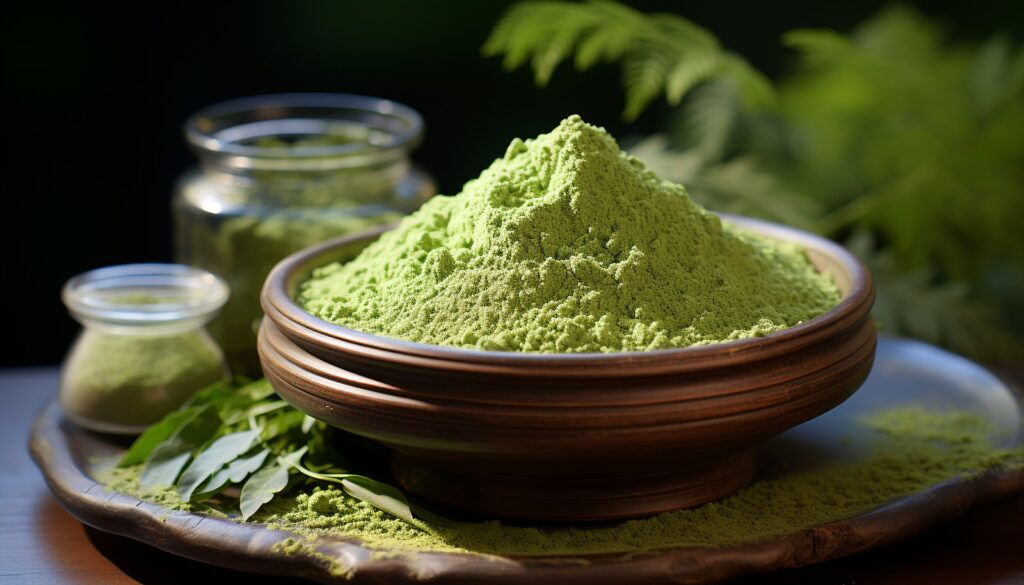
6. Quality products
Having a medical card means that using quality products is practically mandatory because these products guarantee the consumer’s satisfaction. Proper medical card use allows easy access to well-trained dispensaries that maintain such standards in the cannabis products they dispense. It is common for these businesses to grow only the best strains so the user experience may improve.
In addition, when quality is valued, you are less likely to deal with numerous inferior product issues, thus providing a better overall experience. As mentioned above, there are fluctuations in terms of quality and prices. However, it is imperative to state that you should pay attention to the price of quality. Customers can select products from reputable sources and be confident that their purchase is a product that has taken time to develop and construct.
7. Peace of mind
Getting your medical card can be quite beneficial in several ways. First, it guarantees adherence to the law in your jurisdiction so that there is no worry about legal complications. That’s a nice sort of safety that allows for a more pleasing experience– knowing with certainty that you are within the legal boundaries.
Also, having a medical card enables you to buy from registered dispensaries and thus have quality and safety features in what you buy. This gives you faith in the products you are using and even the dispensaries themselves.
Wrapping Up
To conclude, getting your medical card should be treated as an important stage that will allow you to improve the experience. Thanks to the availability of a variety of products and personalized benefits, you will realize that the merits are numerous. The ease with which the renewals are made and the quality guarantee assist in easing the process. This enables the client to be sure while shopping for the services. This is a perfect opportunity to act and take advantage of the benefits of a medical card.
You may like
-


Cannabis Consumers Are Being Hit By The Tariffs
-


The Best Tips To Update Your Wardrobe
-


Former New York Knick Iman Shumpert debuts ‘TSA Approved’ legal cannabis brand
-


How New York pot pioneers made it to legal dispensary shelves
-
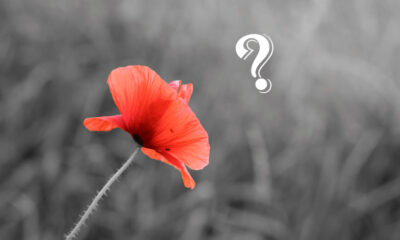

Scientists Now Think That One Compound in the Cannabis Plant Can Replace All Opiates
-
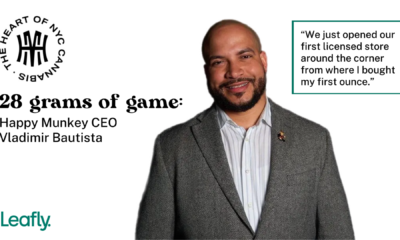

Vladimir Bautista is leading Happy Munkey’s legacy-to-legal takeover
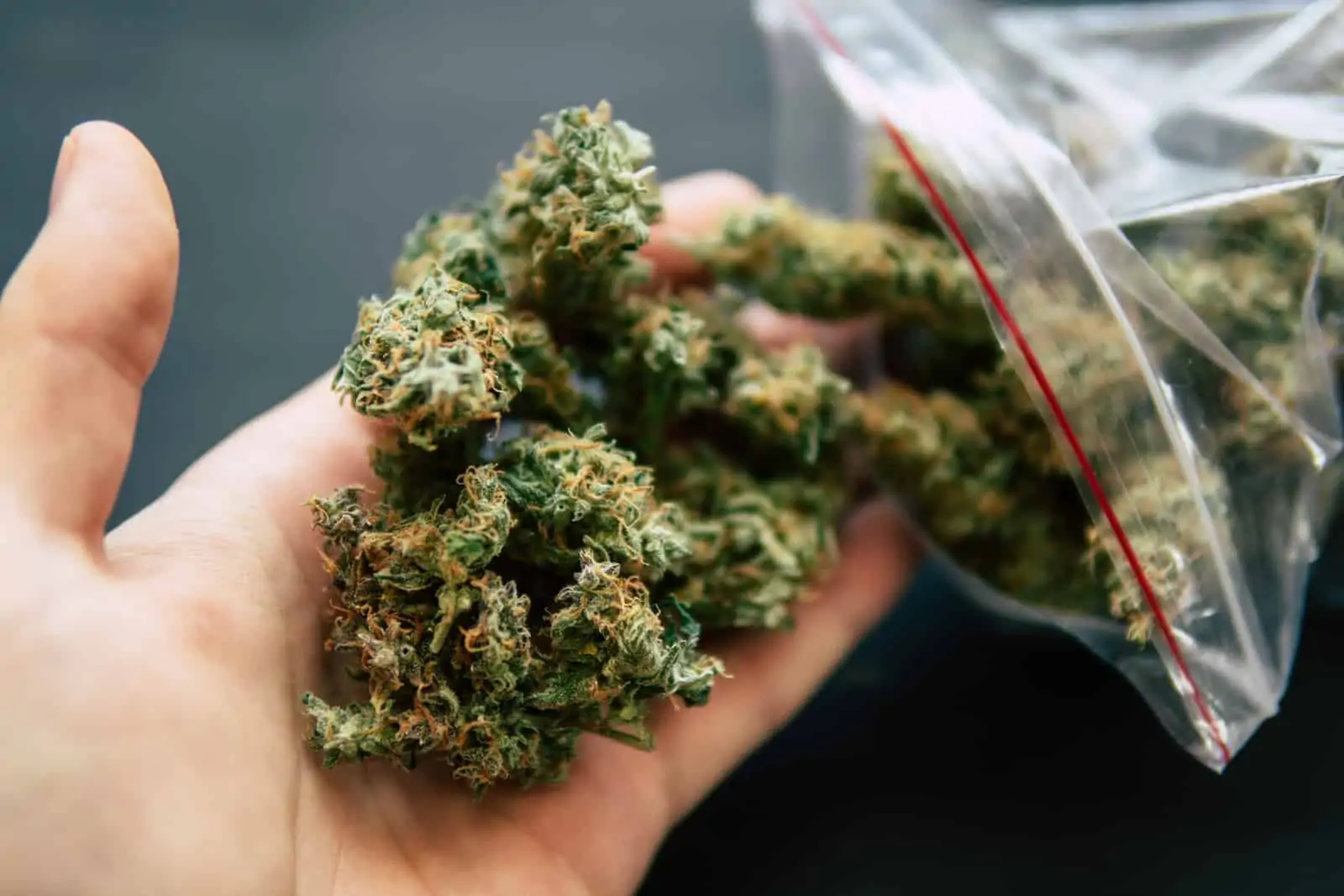
Whether you’re a dispensary owner or customer, knowing how many ounces are in a pound of weed can help you score the best value for cannabis flower, shake, or trim.
Knowing the common weed measurements ensures you buy the right amount for your needs. Knowing how to convert ounces to pounds and pounds to ounces is also helpful.
Buying in bulk often gives cannabis businesses a better bang for their buck compared to consistently and individually buying one gram, eighths, quarter ounces, half ounces, or even ounces of cannabis at a time.
Knowing the amount of weed you’re getting in your purchase can help save you time and money in the long-run. That means you can spend less time driving to the dispensary or paying delivery fees and more time enjoying your weed. Let’s find out how many ounces in a pound of marijuana.
Mass vs. Weight – What Is the Difference?
Let’s start with the basics. Before we discuss how to convert pounds to ounces or ounces to pounds, we will cover the difference between weight and mass. Many people use these two terms interchangeably, but they mean different things.
Mass refers to the quantity of matter in an object. Mass is commonly measured in kilograms and grams.
Weight refers to the interaction between an object and gravity. It is the force of gravity exerted on the mass of an object.
In other words, the weight of a mass is caused by gravity.
Here’s a formula to remember the difference between mass and weight.
Weight = Mass x Acceleration Due to Gravity
Although the mass of an object remains a constant throughout, its weight varies from place to place. For example, that means you will have the same mass on Earth as you do on the moon.
On Earth, gravity can change by location due to several factors, including seasons, topography, and other environmental conditions. For example, the gravity on Earth is weaker at the equator due to centrifugal forces created by the Earth’s rotation. Gravity is also weaker at higher altitudes, since it is further from the planet’s center.
In short, you can weigh differently based on your location.
In an extreme example, your weight on the moon would be substantially less because the moon’s gravity exerts far less force than on Earth. For example, if you weighed 175 lbs on Earth, you would weigh 28.93 lbs on the moon.
On Earth, the average surface gravity is 9.8 meters per second per second. On the moon, the average surface gravity is about 1.6 meters per second per second.
Summary – Mass is an inherent characteristic of matter. No matter where you are, it does not change. Weight can vary depending on the effect of gravity. In an environment without gravity, an object’s weight can be zero, but its mass does not change.
American vs. Standard Mass Measurements
In the United States, the standard units of weight are ounces, pounds, and tons, all part of the U.S.’s customary system of weight.
Tip: Do not confuse the U.S. customary system of weight with the British imperial system. Although they both use the same names of the units, their sizes can vary significantly.
Generally, small amounts of mass such as mail and packages are weighed in ounces. Medium amounts such as your body weight are measured in pounds. Large objects such as cars or trucks are measured in tons. While you can use any customary measurement unit to show the weight of an object, this is the most common way to use ounces, pounds, and tons.
You can easily convert between these units of measurement. For a better perspective on the relationship between each unit weight, here is a conversion:
- 16 ounces = 1 pound
- 2,000 pound = 1 ton
- 907 kg = 1 ton
The metric system, used internationally, measures dry weight in grams (g), kilograms (kg), and tonnes (t). In some American product labels, U.S. customary units (ounces and pounds) may be listed alongside metric units (grams). Metric units are also commonly used by American companies during the manufacturing and distribution process.
What Is an Ounce?
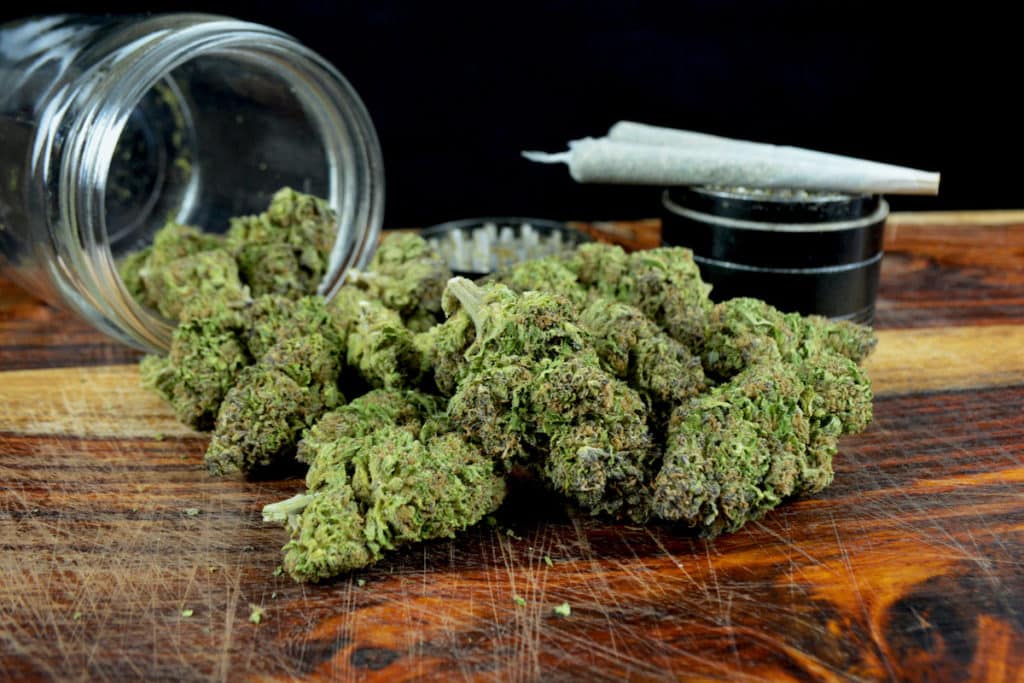
According to Merriam-Webster, an ounce, abbreviated as oz., is defined as “a unit of weight equal to 1/12 troy pound” or “1/16 avoirdupois pound.”
But, what the heck is a troy and avoirdupois pound?
Troy weight is “a system of weight used mainly for precious metals and gems.” A troy ounce is equal to 31.10348 grams and often abbreviated as “oz t” or “t oz.” A troy ounce is equal to 0.0833 troy pounds.
An avoirdupois ounce measurement of weight is based on the pound of 16 ounces. In the U.S., the avoirdupois unit, measured in ounces and pounds, is standard. An avoirdupois ounce is equal to 0.0625 pounds or 28.35 grams, slightly lower than the troy ounce.
Summary: An avoirdupois ounce is equal to 1/16 of an avoirdupois pound. A troy ounce, used to weigh precious metals, equals 1/12 of a troy pound.
What Is a Pound?
According to Merriam-Webster, a pound, abbreviated as lb., is defined as “a unit (of mass and weight) now in general use among English-speaking peoples equal to 16 avoirdupois ounces or 7,000 grains or 0.4536 kilograms.”
Generally, one pound is 16 ounces.
What Is A Pound Of Weed?
The cannabis industry has many common units of measurements for whole-flower products (flower, trim, shake) starting at one gram and going up to a full ounce for dispensary customers. Cannabis customers can buy weed in eighth (3.5 grams), quarter (7 grams), half (14 grams), and full ounces (28 grams).
A pound (abbreviated as lb.) is a unit of weight used to measure cannabis and is typically used in the United States. Most other countries use the metric system (gram, kilogram, and tonne).
Who Buys Pounds Of Weed?
The most common amount of cannabis bought by customers is 3.5 grams (one-eighth of an ounce). Cannabis brands commonly sell flower, trim, and shake in grams and ounces. Cannabis consumers can also buy cannabis in 7 (one-quarter of an ounce), 14 (one-half of an ounce), and 28 (1 oz) gram varieties.
Cannabis consumers aren’t legally allowed to buy pounds of cannabis flower at one time. While many states have legalized cannabis for medical and/or recreational use, each one has distinct laws.
Each state has different medical and recreational cannabis possession and purchasing limits. For instance, California allows recreational users to buy up to one ounce of cannabis per day, while medical users can buy up to eight ounces of cannabis daily.
Depending on the purchasing limits in the state, consumers may be able to buy multiple ounces of weed every day and slowly accumulate a pound of weed for a number of reasons. For example, some medical users may need stronger and more consistent relief and require more cannabis flower to find that relief.
Cannabis consumers who buy pounds of weed may be stocking up to cook or bake with cannabis, although growing cannabis at home ca be more out effective in the long run (if your state allows home cultivation).
Edibles often require high volumes of fresh cannabis to make an infusion. Making cannabis concentrates like shatter or bubble hash also requires high amounts of cannabis material to extract the buds’ cannabinoids and terpenes.

Dispensary owners, delivery service operators, cannabis extraction companies, and other commercial cannabis processors are the only ones buying up pounds of cannabis at a time to keep costs down for them and for their customers.
Dispensaries buy up pounds of their best-selling marijuana strains to keep it ready on shelves and avoid selling out of their most popular products.
Cannabis extraction companies must buy in bulk to fill a large biomass tank where solvents (ethanol, CO2, butane) strip the cannabinoids and terpenes to produce large volumes of crude extract, which can then be processed into a variety of extracts like live resin, crumble, budder, isolates, distillates, and more.
How Many Ounces In A Pound Of Weed?
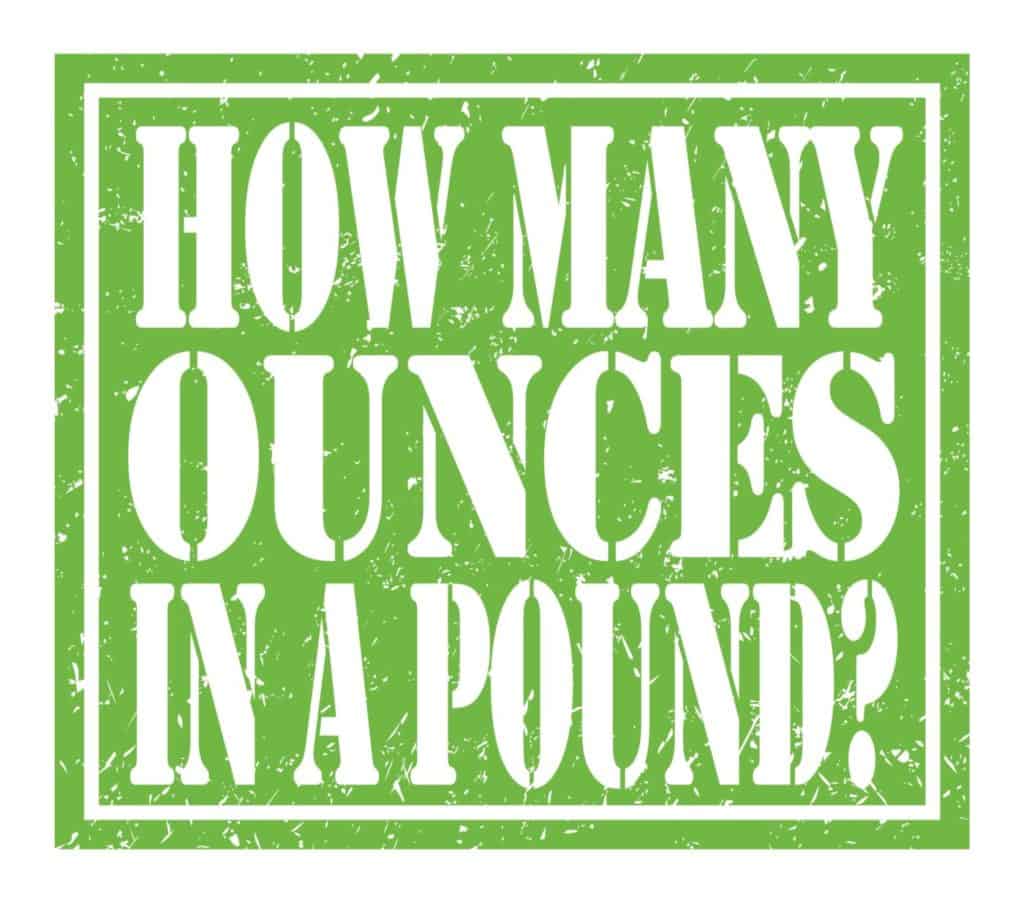
For consumers looking to buy a pound of weed, you’re going to have to make multiple trips to the dispensary on different days (if your state allows it). Cannabis customers can’t just buy a full ounce due to varying purchasing limits on cannabis by state.
When buying cannabis from a dispensary or delivery service, you’re more than likely going to be buying ounces of weed or fractions of ounces such as eighths (3.5 grams), quarters (7 grams), or halves (14 grams).
Cannabis pounds are never sold at one time due to state regulations that limit how much cannabis medical and recreational consumers can buy.
If you’re wondering how many ounces is a pound of weed, the answer is 16 ounces or 448 grams. That means that if you buy a single ounce of weed in a dispensary, you’re buying 1/16 of a pound.
1/16 may seem like a small amount relative to one pound of weed but in reality, an ounce of cannabis can last weeks or months (depending on the amount used and frequency of use) and can retain its potency and aroma for longer if stored properly in a dark, cool, and dry space in an airtight and UV-protected container.
Technically, there are 28.3495 grams in an ounce of weed and 453.592 grams in a pound of weed. However, dispensaries have long been rounding down to 28 grams when selling ounces for simpler transactions.
Using these rounded-down measurements allows cannabis retailers to sell half an ounce (14 grams), a quarter (7 grams), or the popular eighth (3.5 grams) at even measurements without having to measure accurately down to the fourth decimal place.
An eighth of cannabis is actually 3.54369039 grams, but that’s hard to get just right with conventional scales. Over time, the rounded-down approximations can add up, but these industry standards are here to stay to streamline the shopping process.
If you want to know how many ounces or grams are in a quarter or half pound of weed, just divide by 4 or 2, respectively. A quarter pound of weed is four ounces or 112 grams. A half pound of weed is eight ounces or 224 grams.
If you want to buy two pounds of weed, that would be 32 ounces. Three pounds of cannabis would be 48 ounces. Four pounds of weed is 64 ounces and so on.
Not everyone buys up a full ounce on every dispensary visit. Weed is typically sold as fractions of an ounce at dispensaries.
The three most common ounce fractions bought at pot shops are eighths (one-eighth of an ounce or 3.5 grams), quarters (one-quarter of an ounce or 7 grams), and halves (one-half of an ounce or 14 grams).
Infrequent users may stick with single gram options or pre-filled joints. Heavy and daily users are better off buying in bulk to save money and time.
Now, let’s break down what fraction of a pound are eighths, quarters, and halves. An eighth (3.5 grams) of cannabis is 1/128 of a pound. A quarter of weed (7 grams) is 1/64 of a pound. A half of weed (14 grams) is 1/32 of a pound.
These fractions of a pound are not very easy-to-remember, which is why dispensaries typically deal in fractions of ounces as units of measurements, which are easier for customers to remember and work with.
Dispensary owners and other cannabis businesses typically don’t use the same units of measurements as cannabis consumers when buying or processing weed.
Instead, dispensary owners and processors buy up pounds of weed at a time to meet the high demand for the most popular cannabis product: flower. Instead of buying up 240 ounces of cannabis, a business owner would simply say they’re buying 15 pounds of cannabis.
Pounds to Ounces Conversion Table
| Pounds (lb) | Ounces (oz) |
|---|---|
| 0 lb | 0 oz |
| 0.1 lb | 1.6 oz |
| 1 lb | 16 oz |
| 2 lb | 32 oz |
| 3 lb | 48 oz |
| 4 lb | 64 oz |
| 5 lb | 80 oz |
| 6 lb | 96 oz |
| 7 lb | 112 oz |
| 8 lb | 128 oz |
| 9 lb | 144 oz |
| 10 lb | 160 oz |
| 20 lb | 320 oz |
| 30 lb | 480 oz |
| 40 lb | 640 oz |
| 50 lb | 800 oz |
| 60 lb | 960 oz |
| 70 lb | 1120 oz |
| 80 lb | 1280 oz |
| 90 lb | 1440 oz |
| 100 lb | 1600 oz |
| 1000 lb | 16000 oz |
Ounces to Pounds Conversion Table
Looking for an easy way to convert ounces to pounds? Our handy ounce-to-pound conversion table has got you covered.
| Ounces (oz) | Pounds (lb) |
| 1 oz | 0.0625 lb |
| 2 oz | 0.125 lb |
| 3 oz | 0.1875 lb |
| 4 oz | 0.25 lb |
| 5 oz | 0.3125 lb |
| 6 oz | 0.375 lb |
| 7 oz | 0.4375 lb |
| 8 oz | 0.5 lb |
| 9 oz | 0.5625 lb |
| 10 oz | 0.625 lb |
| 20 oz | 1.25 lb |
| 30 oz | 1.875 lb |
| 40 oz | 2.5 lb |
| 50 oz | 3.125 lb |
| 60 oz | 3.75 lb |
| 70 oz | 4.3750 lb |
| 80 oz | 5 lb |
| 90 oz | 5.625 lb |
| 100 oz | 6.25 lb |
How To Weigh A Pound Of Weed?
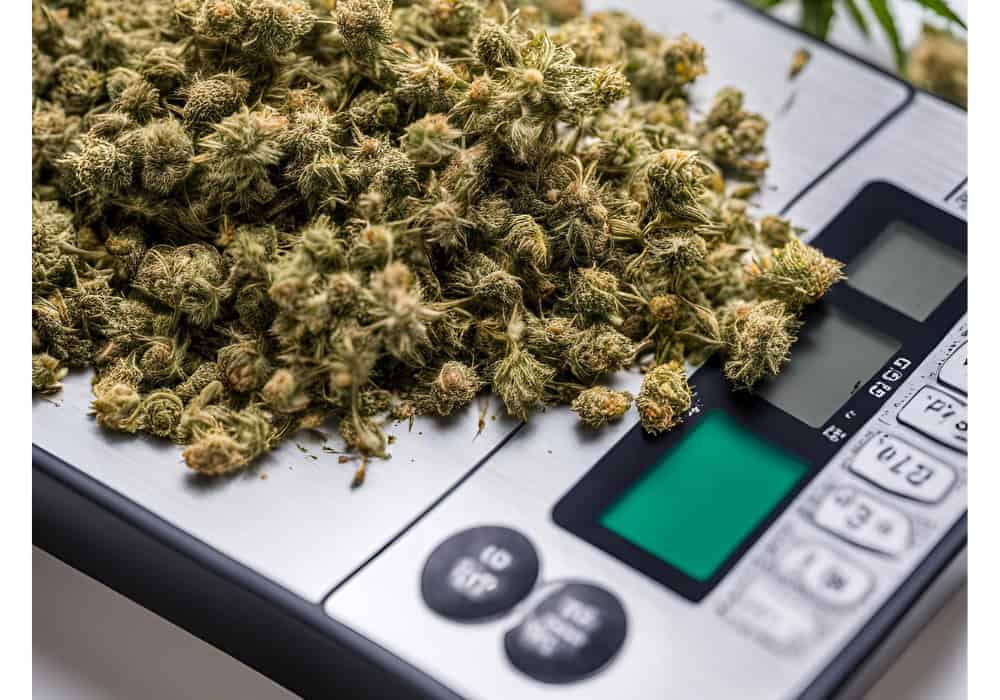
Cannabis consumers or business owners with a pound of weed on their hands can double-check that their weight is correct by weighing the product with a scale. Eye-balling the marijuana to weight it will not yield accurate measurements.
Cannabis flower buds vary in density, size, and shape. For example, dense indica buds can take up less space than wispy sativa flowers. Indica flowers are known for being smaller and denser than sativa buds that can be long, slender, and airy. Hybrid strain density, size, and shape are determined by its genetics.
A dependable and functioning weed scale can ensure you accurately measure out the right dose of cannabis or use the right amount of weed when making edibles. Using correct measurements when cooking with weed ensures you consume the right amount without feeling any adverse effects that can occur due to overconsumption.
Picking the right scale for measuring a pound of weed requires users to consider the capacity of the scale and its resolution. The resolution means how accurately the scale can measure an object.
Most small, digital scales can measure with a tenth of a gram accuracy (0.1 gram). Smaller scales are ideal for measuring eights (3.5 grams) and other fractions of an ounce. For most users, a small digital scale can help them measure out their personal stash.
For a larger volume of weed, a larger scale is needed. Larger scales usually have better resolutions than smaller ones. Large scales can measure within one-hundredth of a gram (0.01 gram). Larger scales are commonly used by cannabis companies.
Now, you may be wondering: why do larger scales have better measurement accuracy than smaller scales? Larger scales can measure down to 0.01 gram because of the quality of their load cells. Load cells measure the mechanical force of an object.
Digital scales convert the force of weight of the object into electrical signals. The quality and number of load cells on a bigger scale is meant to maintain its accuracy, even when weighing larger quantities.
Larger scales also have bigger platforms capable of handling a high volume of weed at once compared to the smaller platforms of small scales. Users may use a container with high sides to measure the weight of the weed vertically to avoid spilling it over the platform.
A gallon container should be enough to measure up to a couple of pounds of cannabis flower buds. Users should make sure to zero out the weight of the container before adding the weed into it to not include its weight in the final measurement.
When weighing the cannabis flower on the scale, users should account for the weight of the packaging and subtract that from the total weight. Removing the cannabis front the packaging ensures users get an accurate measurement.
Also, users should make sure the weight scale is properly calibrated to get accurate results. Weight scales have multiple weight units including grams, ounces, and more.
Finally, consider readability of the scale, which is the smallest increment that a scale can display.
Can You Weigh Weed Without a Scale?
Measuring the amount of weed you have by eye is not effective. Even if you’ve been dealing with large quantities of weed for decades, there’s absolutely no way to weigh cannabis by eye. You may get close to your goal weight when measuring by eye but be off by several grams or ounces.
It’s difficult to accurately measure the weight of any amount of cannabis without a scale, including one gram of weed, let alone an ounce or a pound of weed.
One reason measuring by eye is difficult is because of varying densities and structures of weedflower, shake, and trim. Looking at bud size alone isn’t enough.
Some long and airy sativa buds may look big, but can weigh less than a dense indica popcorn bud that looks smaller. In addition, some shake can have finer consistency or larger chunks of bud.
Most cannabis from licensed retailers comes pre-packaged in certain amounts. If you or someone else weighs weed without a scale, just know you run the risk of over or underestimating the actual weight.

How Much Is a Pound of Weed?
If you’re wondering how much is a pound of weed, you’re probably looking to buy large quantities. The price of weed varies by state, quality of the cannabis, and grower. Generally, a pound of weed costs between $2,000 and $3,000.
In states like California and Colorado, there are legal limits to how much weed you can buy at one time. Only licensed retailers can buy these amounts directly from producers at these wholesale prices.
Wholesale Cannabis Prices
Wholesale prices continued to fall in key markets.
COVID-19 shutdowns caused some fluctuations in prices, especially in states that closed down adult-use stores and those dependent on the tourism market.
How Much is a Pound of Marijuana in Colorado?
In Colorado, a pound of cannabis sits around $750-$850 in 2024.
How Much is a Pound of Pot in California?
In California, the price per pound for cannabis flower has gone down. Demand has remained strong but there has been an inventory hangover from 2020. Prices range from $800-$2,000 on average.
How Much is a Pound of Cannabis in Oregon?
Since July 2020, one pound of cannabis was between $1,200 and $1,400 but fell dramatically to $999 in August 2024.
How Much Can One Weed Plant Grow?
Growing cannabis at home is a fun and easy way to grow your cannabis medicine. When growing your weed at home (if legal in your state), you have full control over what goes into your weed. Growers can choose outdoor, indoor, or greenhouse environments to grow their plant, depending on state and local laws and space limitations.
A cannabis plant’s yield is determined by its genetics and growing methods (nutrients, water, pH, temperature, humidity, pests, air flow, lighting, etc.). A cannabis plant can yield anywhere from a few ounces to several pounds of weed if cared for properly.
Knowing how to convert grams to ounces of weed and ounces to pounds of weed can help consumers and businesses estimate how much they can grow in a season and buy in bulk from cannabis producers without getting ripped off.
To reiterate how many ounces are in a pound of weed, there are 16 ounces or roughly 450 grams of cannabis in a pound. An ounce has about 28 grams of cannabis. Now, go out there and make smart weed purchasing decisions.
How Many OZ in 1 Pound?
There are 16 ounces in 1 pound.
How Many Ounces in 1 lb?
There are 16 ones in 1 lb.
How Many Ounces in a Pound?
There are 16 ounces in a pound
How Many Ounces Equals a Pound?
16 ounces equals a pound.
How Many Ounces in a Quarter Pound?
There are four ounces in a quarter pound. One way to determine the number of ounces in a quarter-pound is to multiply the number of ounces in a pound (16) by 0.25.
1/4 lb. (.25) x 16 = 4 ounces
To determine the number of ounces in a quarter-pound, divide the number of ounces in a pound (16) by four.
16 ÷ 4 = 4 ounces
How Many Ounces in Half a Pound?
There are eight ounces in half a pound. Sixteen ounces multiplied by 0.5 equals eight ounces.
1/2 lb. (.5) x 16 = 8 ounces
You can also divide 16 ounces (one pound) by two to determine how many ounces are in half a pound.
16 ÷ 2 = 8 ounces
How Many Ounces Are in Three-Quarters of a Pound?
There are 12 ounces in three-quarters of a pound. Multiply 0.75 by 16 to determine how many ounces there are in three-quarters of a pound.
3/4 lb. (.75) x 16 = 12 ounces
Another easy way to find out how many ounces there are in three-quarters of a pound is to divide 16 ounces by 1.3333333333.
16 ÷ 1.3333333333 = 12 ounces
2 lbs to oz Conversion
Two pounds is 32 ounces.
2 lbs x 16 = 32 ounces
3 lbs to oz Conversion
Three pounds is 48 ounces
3 lbs. x 16 = 48 ounces
4 lbs to oz Conversion
Four pounds is 64 ounces.
4 lbs. x 16 = 64 ounces
5 Pounds Equals How Many Ounces?
There are 80 ounces in 5 pounds.
5 lbs. x 16 = 80 ounces
How Many Fluid Ounces Are In a Pound?
Fluid ounces measure the volume of an ingredient or material such as a liquid. The number of fluid ounces in a liquid will depend on its density. For example, honey is denser than water. Density refers to the level of compactness of a substance or object.
Here is a list of the density of common fluids at 68º F (20º C) and 1 atm (atmospheric pressure).
| Fluid | Density (g/cm3) |
| Water | 0.99820 |
| Gasoline | 0.66-0.69 |
| Ethyl alcohol | 0.791 |
| Olive oil | 0.9 |
| Milk | 1.028-1.035 |
| Sea water | 1.03 |
Do not mix up fluid ounces for standard ounces. Standard ounces are measurements used to weight dry ingredients, such as sugar or flour. Fluid ounces measure the volume, not the weight, of liquid ingredients, such as milk or water. For this reason, 16 fluid ounces do not equal one pound.
If you want to convert a fluid ounce, abbreviated as fl. oz., measurement into a pound measurement, there’s an easy way to do it. Divide the volume multiplied by the density of the liquid by 15.337783.
Use this formula for an easy conversion:
Pounds = (fluid ounces x density of substance) ÷ 15.337783
For example, here is how to convert 10 fluid ounces to pounds for a substance with a density of 0.92 g/mL.
10 fl. oz. = (10 x 0.92) ÷ 15.337783 = 0.59982593 lb.
Summary: To determine the number of fluid ounces in a pound, multiply the volume of the liquid by its density and divide that result by 15.337783.
FAQs About Ounce to Pound Conversions
You have questions. We have answers. Here are the most frequently asked questions relating to ounce-to-pound conversions.
Note: Before we answer your FAQs, it’s important to note that there will be 16 ounces in one pound of any object (except precious gold and gems). For example, a pound of feathers has the same amount of ounces as a pound of lead.
How Many Ounces in a Liter?
There are 33.814 fl oz in a liter.
How Many Ounces in a Pint?
There are 16 fl oz in a pint.
How Many Ounces in a Kilogram?
There are 35.274 ounces in a kilogram.
How Many Ounces in a Gram?
There are 0.035274 oz in a gram.
How Many Oz in a Tablespoon?
There are 0.5 fl oz in a tablespoon.
How Many Ounces in a Teaspoon?
There are 0.166667 fl oz in a teaspoon. Knowing how many ounces in a teaspoon can come in handy when working with edibles cannabis product formulation.
How many ounces in a pound of weed?
There are 16 ounces in a pound of weed.
How many ounces of weed in 1 2 pounds?
There are 8 ounces of weed in half a pound.
How much is a zip?
One zip is 28 grams, four quarters, or eight eighths of cannabis.
How big is a 1lb bag of weed?
A pound is 16 ounces, which equals 453.59 grams of weed.
How many grams is a QP?
A QP, also known as a quarter pound, equals 113.4 grams of cannabis.
How is weed measured in?
Marijuana is most commonly sold by the gram, eighth, quarter, half-ounce, ounce, or pounds. Prices often range from $10 a gram to up to $3000 a pound.

Fred Hernandez
Fred Hernandez is a highly accomplished and versatile writer, boasting an extensive background in the cannabis industry. With an in-depth understanding of various sectors including cultivators, processors, retailers, and brands, Fred’s expertise spans across the entire cannabis landscape. As a prominent contributor to CTU, he consistently delivers insightful articles exploring the latest developments, news, and regulations shaping the cannabis industry. Whether it’s delving into the intricacies of cannabis products, cannabis strain reviews, or providing comprehensive analyses of cannabis laws, or sharing expert insights on cannabis cultivation techniques, Fred’s wealth of knowledge positions him as an invaluable writer and educator for all cannabis-related subjects.
Cannabis 101
Popular Marijuana Concentrates & Extracts and How to Consume Them
Published
3 months agoon
December 31, 2024By
admin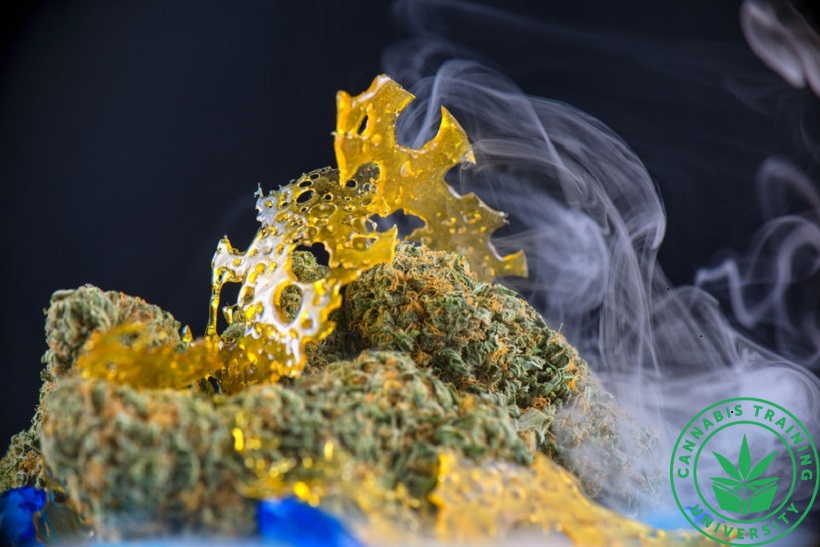
Cannabis concentrates & extracts allow you to experience a higher potency compared to smoking flower.
Ounce for ounce, marijuana concentrates have a far greater proportion of cannabinoids and terpenes than raw cannabis flowers. They can be consumed in many ways.
Whether you’re a newbie or a seasoned user, our guide can help you find the right concentrate for you.
What Are Cannabis Concentrates & Extracts?
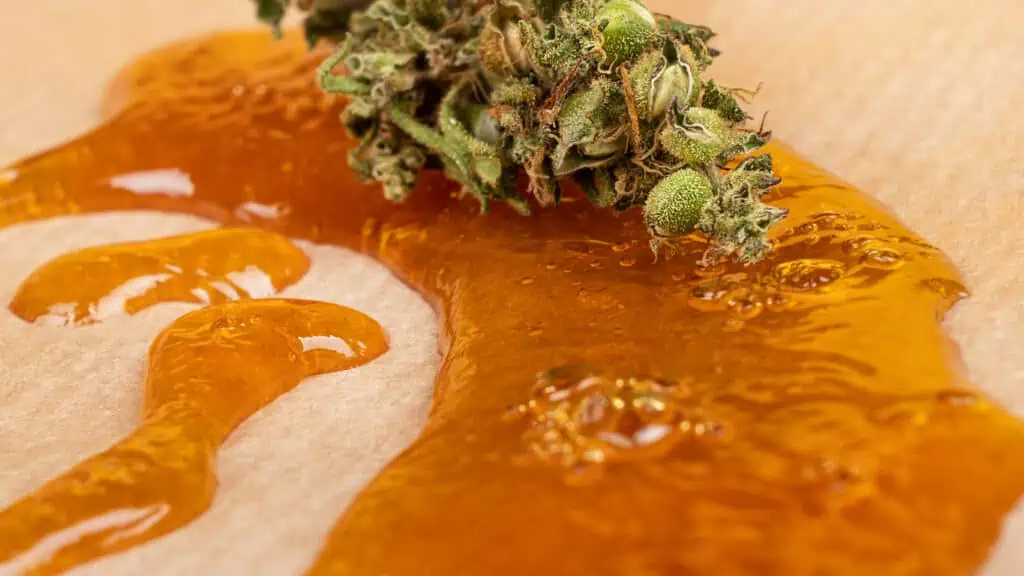
Cannabis concentrates are concentrated forms of the plant’s trichomes, which contain active ingredients such as cannabinoids and terpenes.
As a result, the concentrates are much more potent than cannabis flower buds.
Concentrates come in a variety of colors, consistencies, textures, and potencies, depending on the starting material and extraction process.
Extracts refer to concentrates made using solvents.
The most popular chemicals used for solvent-based concentrates are butane, ethanol and CO2.
Solvent-Based Extracts
Solvent-based extractions are made with chemical compounds such as butane, carbon dioxide, ethanol, or propane.
They are used to dissolve the plant and carefully strip out the cannabinoids and terpenes.
Shatter
Shatter is one of the most popular extracts available. It has a glass-like, translucent, and amber appearance.
Its consistency ranges from brittle to sappy.
These popular concentrates are usually made with harsh solvents like butane.
These products are best created in modern MIP facilities with established safety measures in practice.
While shatter, wax, and other concentrates can be made at home, the process can be dangerous because of the solvents and heat used.
Unlike hash and moon rocks (and sometimes hash oil), shatter and wax are consumed using a dab rig (a bong-like apparatus used for concentrates) or another dabbing device.
Wax
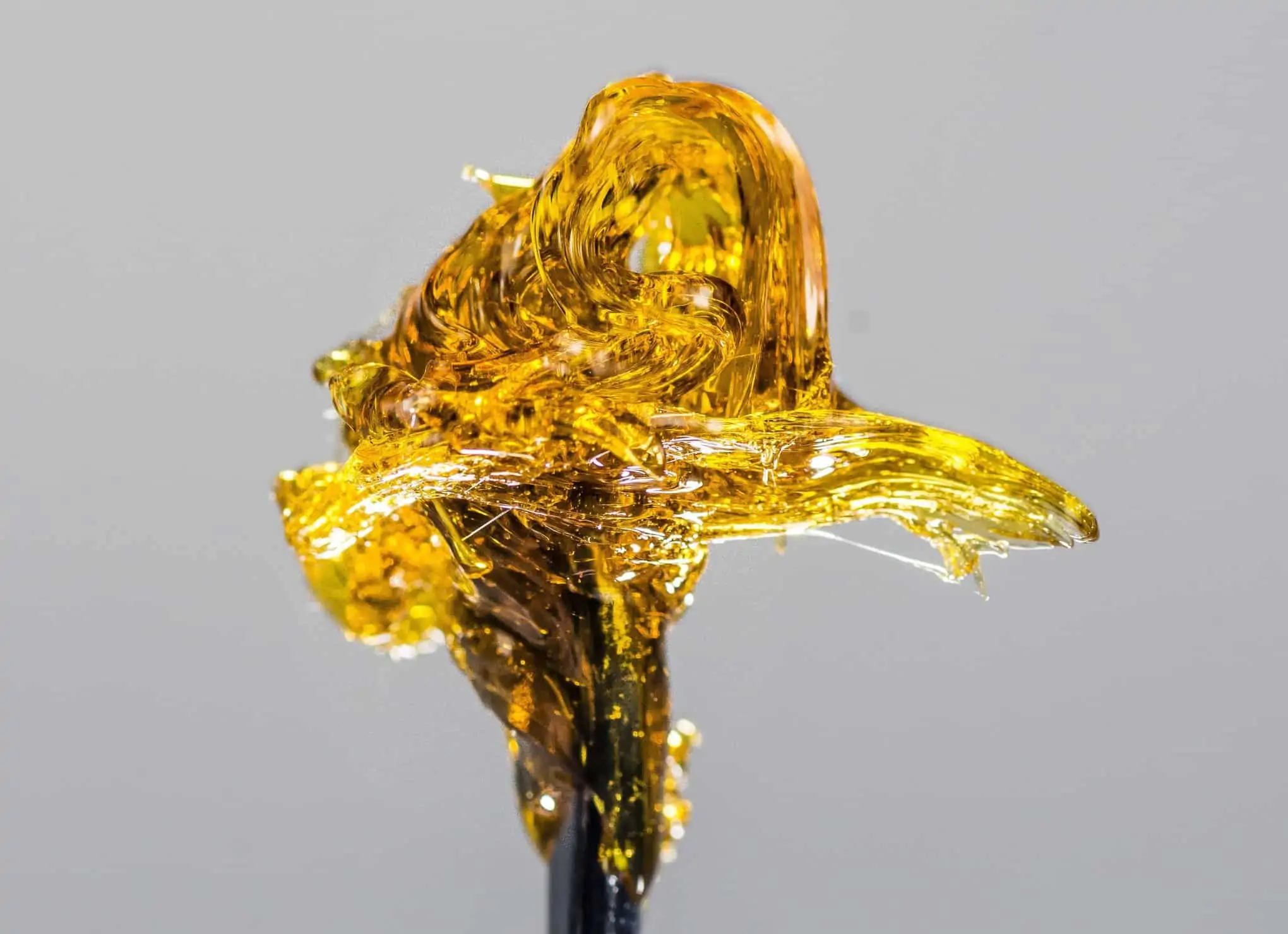
Cannabis wax, is very similar to shatter but has a gooier texture. It is made using hydrocarbons and has a waxy consistency. It has a light and opaque color.
Live Resin
Made from flash-frozen cannabis buds, live resin has a higher concentration of terpenes than most other extracts. It has a golden yellow color and a sticky consistency.
Live Resin can be dated back to 2012-2013 when a team of Colorado growers pioneered the extraction process.
As briefly mentioned before, the process begins by flash freezing fresh cannabis, by placing it in a freezer with dry ice or by being slowly dipped in liquid nitrogen.
The plant matter is then kept frozen until it is ready for extraction, which usually takes place within 36 hours.
Live resin is then extracted using a process that is similar to the ones used to make other extracts.
The precious plant material is ran through solvent which is then vaporized when the product is finally consumed.
The main difference in this process when compared to the process used for making other concentrates, is that the solvent is cooled down for extraction.
The final product is then expelled of solvents at a much lower temperature than with other concentrates.
Distillate
Cannabis distillate refers to an odorless and flavorless oil that has a single cannabinoid, THC or CBD, without any additional terpenes.
Distillate can be made with ethanol or hydrocarbons. It is found in edibles, capsules, tinctures, and vape cartridges.
Budder
Budder is a marijuana concentrate that looks like butter, but not just any butter – peanut butter.
The butane extraction method is used in this case.
Cannabis processors use a whipping technique during extraction to create the creamy consistency.
Hash Oil
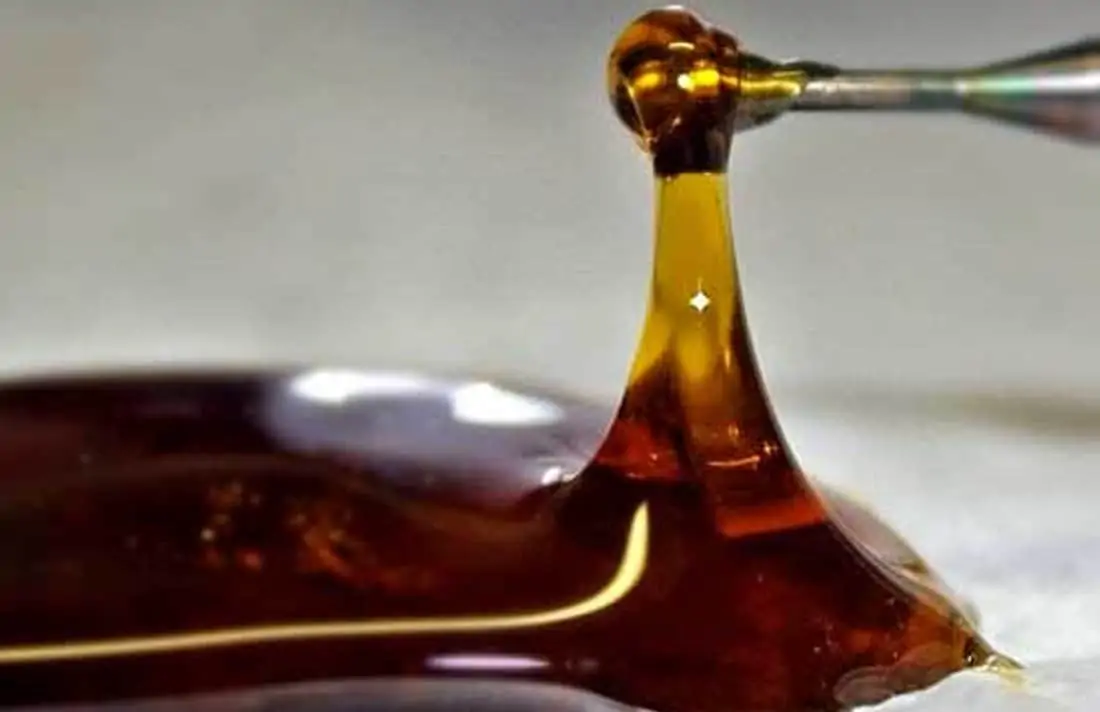
Hash oil is also popular, but it is usually more potent than other extracts. Some people include hash oil in their edibles and topicals for high potency.
It can be used in a vaporizeror vape cartridge
The color of the oil can vary depending on the extraction method or purity, but most commonly it’s a golden amber color. Hash oil is made with either cannabis flower or hash.
Making hash oil involves using solvent extraction methods, utilizing one of a wide variety of solvents.
The potency and versatility of this concentrate makes it very popular.
Solventless Concentrates
Solventless concentrates are made without the use of harsh chemical solvents.
Instead, a range of agitation techniques or methods using heat and pressure break apart or melt the cannabis trichomes.
Rosin
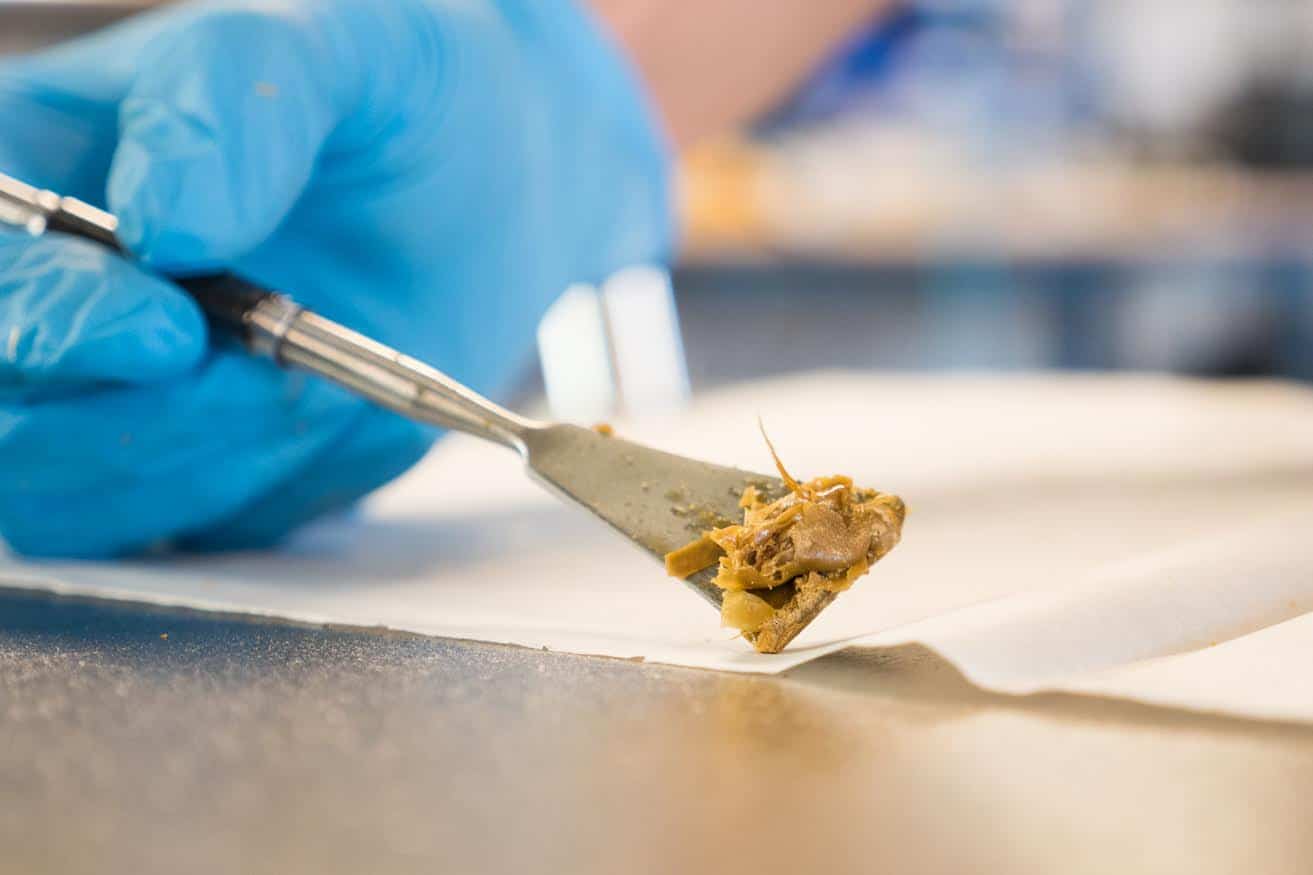
Cannabis rosin has a viscous consistency and is made by squeezing raw material such as flower or kief/hash with heat and pressure.
It can be easily made at home with a hair straightener and some parchment paper.
You can make rosin with either cannabis flowers or hash. From this, the person doing the extraction employs heat and pressure to create a rich, potent hash oil.
Most of the rosin made for sale in dispensaries is produced in large quantities using sophisticated industrial equipment, but many people make it at home using simple household devices and materials.
Many people favor rosin because it doesn’t use harsh solvents.
You can create homemade rosin with an adjustable flat iron or other heat press, cannabis flower or hash, nonstick parchment paper cut into 4- by 8-inch strips, a collection device (dab tool; small knife; or razor blade), and pieces of 25u micron screen.
Wrap 0.25- to 0.50-gram portions of flower or hash in a 25-micron screen, pressing them flat.
Place the wrapped material onto a sheet of parchment paper, then fold the paper over to fully enclose the screen and its contents.
Next, press the flat iron firmly for 3 to 5 seconds. Apply steady pressure for 4 to 6 seconds, then gently unfold the parchment paper.
Carefully remove the screen and its contents, ensuring all rosin oil remains on the parchment paper. Use a collection tool to scrape and gather the rosin.
Repeat the process as needed until you achieve the desired amount of rosin.
Using lower iron temperatures (250–300°F) produces less rosin but enhances the terpene profile, resulting in a more flavorful experience.
In contrast, higher temperatures (300–335°F) yield more rosin but with a reduced flavor intensity.
Rosin is aesthetically difficult to distinguish from sap or shatter. But, there are differences.
Rosin has no residual solvents because these will usually remain behind after the extraction process that involves propane or butane.
Live Rosin
Live rosin is just like rosin except that it is made with flash-frozen material to preserve the terpenes in the plant.
Hash
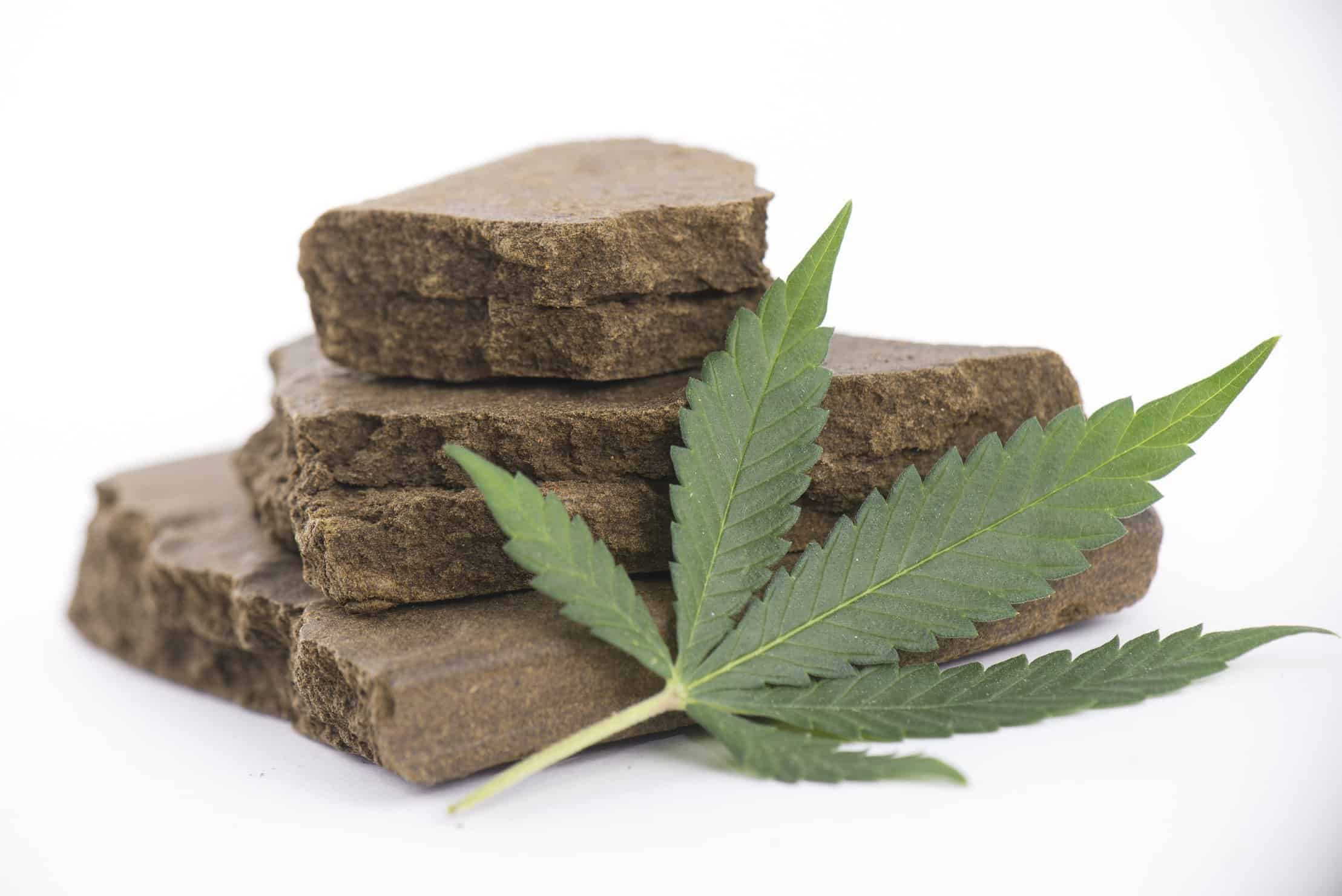
Hash refers to the collection of kief that is compressed into a ball or slab.
Hashish, or “hash” as it is commonly called, is the oldest cannabis concentrate and has a history of use that spans thousands of years.
The earliest form of hash, known as “finger hash,” is made during the cannabis harvesting process.
Harvesters rub their hands over the sticky, trichome-covered buds, collecting a thick, sap-like residue.
This residue is then rolled into balls that are highly rich in THC, typically containing 40-50 percent.
Bubble Hash
Bubble hash, also known as water hash, has a crumbly and dry consistency. It is made using an ice water agitation technique and screen filtration.
Either dried flower or freshly harvested flower will work to make bubble hash.
When using fresh flower, the resulting hash is sometimes referred to as “live hash.”
Some people believe that the live hash terpene experience—the aroma and flavor of the hash—is superior to that of hash created with dried flower.
Bubble hash remains one of the easiest and safest cannabis concentrates to make. The resulting hash can either be smoked by itself or combined with flower in a joint or as a bowl topper.
It can also be used in making a tarantula joint. It adds a potent kick when smoked.
Moon Rocks
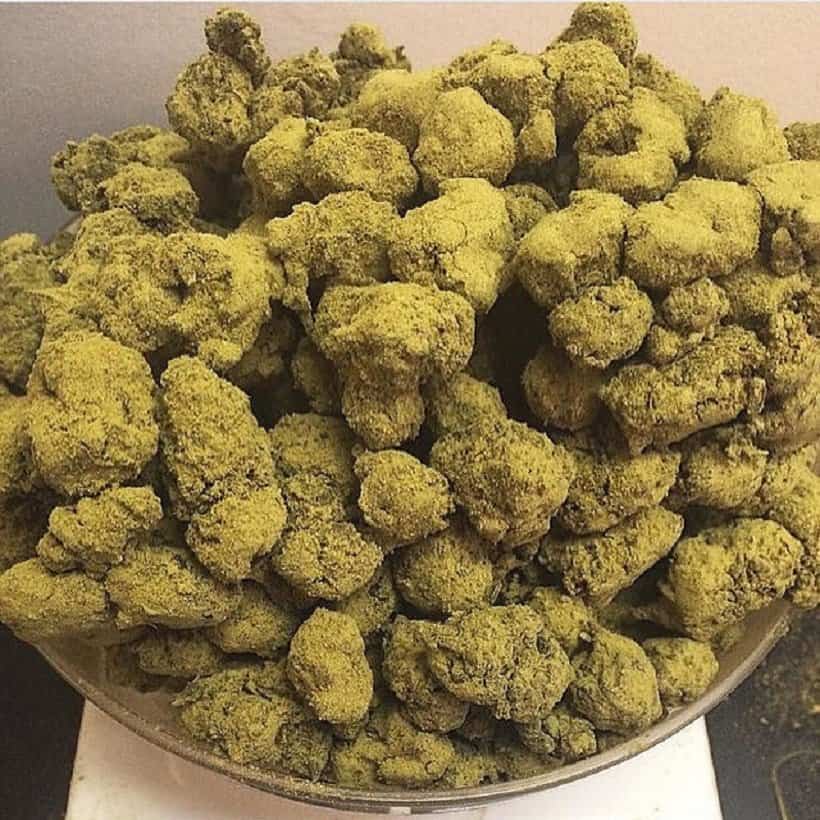
Moon rocks fall into the cannabis concentrates category and are easy to make if you have the necessary ingredients.
They consist of prime cannabis flowers, hash oil, and kief (the THC-rich, trichome-laden particles that collect in the bottom trap of many cannabis grinders).
To make moon rocks, start with a cannabis flower and thoroughly coat it in cannabis oil, ensuring the flower is fully saturated.
Lastly, roll the oil-covered flower in kief until it’s evenly coated with a thick layer.
Moon rocks are consumed by smoking them, typically using the following methods:
- Pipe or Bowl:
Break the moon rock into small pieces using your fingers or a knife. Avoid using a grinder, as the sticky oil and kief can clog it. Place a small piece in a pipe or bowl and light it gently, allowing it to burn slowly for a smooth hit. - Bong:
Similar to using a pipe, a bong can enhance the experience by filtering the smoke through water, making it cooler and smoother. Load a small piece of moon rock into the bowl and smoke it as you would regular cannabis. - Joint or Blunt:
You can mix small pieces of moon rock with ground cannabis to roll a joint or blunt. This helps it burn more evenly and prevents the stickiness from affecting the roll.
The overall effect will depend largely on the type of flower used (indica or sativa), as well as the sour material used to create the oil and kief.
Moon rocks are fun to both consume and create, and they make a nice change of pace over more traditional concentrates.
How to Consume Marijuana Concentrates and Extracts
Cannabis flower has THC levels between 10 and 25%, while concentrate levels can be between 50 to nearly 100%.
Dabbing is the most popular consumption method, but concentrates can also be found in vape carts, tinctures, edibles, and topicals.
1. Pipes and Joints
Cannabis concentrates can be easily added on top of packed bowls of cannabis or inside/outside of joints and blunts to give you an extra dose of potency.
Add kief on top of bowls or gently heat cannabis wax to make it easier to add inside or outside of a joint.
2. Dabbing
One of the best ways to enjoy cannabis concentrates is with a traditional dab rig or an e-nail. Dab rigs are usually made of borosilicate glass and look like a bong.
However, instead of a bowl piece, it has a nail that you heat up with a blowtorch. Then you apply the dab to the nail surface for vaporization. Water can go inside the rig to filter the vapor.
E-nails are more convenient and efficient ways to dab cannabis concentrates. They have a temperature control box and coil that keeps the nail at a specific temperature without having to use a blowtorch.
An oil or dab rig allows you to smoke the wax dabs you’ve either extracted yourself or purchased.
Using a dab rig may seem daunting at first glance, especially the torching part, but it is super easy and safe. If you don’t want to deal with torching your nail, you can invest in an electronic nail for easier dabbing.
Here are step-by-step instructions on how to use a traditional dab rig:
- Fill up the water pipe with sufficient water and then attach the nail to the pipe’s intake.
- Use the torch on the quartz or titanium nail, heating it until it is red hot. Try not to overheat or the nail will be damaged.
- As soon as the nail is sufficiently heated, allow it to cool for between 20 to 30 seconds.
- Then, it is time to place a small dab on the dab nail.. For a good dab hit, you only need a small amount of dab because of its heavy concentration.
- Place your carb cap on top of the dab nail and inhale through the mouthpiece until all the vapor is gone.
- Exhale and repeat as necessary.
Pro tip: Clean your dab rig and dab tools regularly to ensure you have a flavorful experience time after time.
3. Vaporizers
Cannabis vaporizers allow you to add a dab of concentrate to the heating chamber, which turns it into a vapor. Then, you just inhale and enjoy. Some vaporizers can work with both dry herb and extracts.
Pre-filled vape cartridges contain cannabis oil and can screw into a 510-threaded battery or you can buy disposable vape pens that already come with a battery.
Disposable vapes usually have one temperature setting.
Vaporizers can have a range of pre-set temperatures or the ability to zero in on a specific temperature degree to get the maximum level of terpenes and cannabinoids.
4. Edibles
All the edible products on dispensary shelves are made with cannabis concentrate. Enjoy the benefits of a concentrate with non of the smoke.
Edibles have a longer onset time (1 to 2 hours) and duration time of effects (6 to 8 hours). The experience will depend on your tolerance, amount consumed, metabolism, and potency of the product.
5. Topicals
Cannabis concentrates can also be made as topicals such as salves, creams, and lotions. A topical infusion can be applied directly to the affected area for relief.
Topicals do not absorb into the bloodstream or cause intoxication.
Become a Cannabis Extraction Expert
Gain a complete understanding of the process by enrolling in Cannabis Training University’s (CTU) online cannabis college.
Students receive well-rounded education in cannabis extracts and concentrates:
- Introduction to cannabis extraction
- Preparing the cannabis
- Cannabis infusion and extraction processes
- Straining, filtering, and purging
- Cooking with cannabis
- Cannabis recipes
Learn from the top cannabis extraction technicians and chefs. Start making your own extracts and infusions today!
If you want to know more about other marijuana concentrates, check out the Cannabis Training University where you can enroll as a student at the leading cannabis training college!

Fred Hernandez
Fred Hernandez is a highly accomplished and versatile writer, boasting an extensive background in the cannabis industry. With an in-depth understanding of various sectors including cultivators, processors, retailers, and brands, Fred’s expertise spans across the entire cannabis landscape. As a prominent contributor to CTU, he consistently delivers insightful articles exploring the latest developments, news, and regulations shaping the cannabis industry. Whether it’s delving into the intricacies of cannabis products, cannabis strain reviews, or providing comprehensive analyses of cannabis laws, or sharing expert insights on cannabis cultivation techniques, Fred’s wealth of knowledge positions him as an invaluable writer and educator for all cannabis-related subjects.
Cannabis 101
Ultimate Guide to Weed Measurements and Costs
Published
3 months agoon
December 31, 2024By
admin
If you’re new to cannabis, learning weed measurements is essential for buying, cooking, and consuming with confidence.
In our ultimate guide to weed measurements and costs, we break down the slang terms and cannabis market prices.
Various Measuring Systems for Cannabis
In the United States, most people are familiar with the imperial system (feet, inches, pounds, ounces, etc.).
However, cannabis is measured using both the metric system (grams) and the imperial system (ounces). Understanding how these systems overlap can be incredibly useful.
Measurements in pounds and ounces are part of the imperial system and are usually only available for purchase by licensed operators.
Dispensaries that use the gram form of measurements are taken from the international unit system, or the metric system.
To complicate matters, dispensaries round down when converting ounces to grams. For example, one ounce of cannabis is technically 28.35 grams. At a dispensary, one ounce will be rounded down to 28 grams.
Weed Measurements Street Terms
There are many slang terms for cannabis. Eighth, ounce, full O, dime, quarter, dub, and Z are a few. Dime and Dub are terms for $10 or $20 worth of cannabis. An eighth, half or quarter is between 3.5 grams to 14 grams. An ounce, Z or full O, is twenty eight grams.
While slang cannabis terms are usually used by black-market dealers instead of budtenders at licensed dispensaries, you may hear these terms being used there, too.
Here is a quick rundown on common slang terms for cannabis measurements:
- Dime bag – A dime bag refers to a measurement of weed that is $10. It’s usually about 1 gram of cannabis.
- Dub sack – A dub sack, also known as 2 grams of cannabis, refers to $20 worth of marijuana.
- A slice – A slice is a term used to describe an eighth of weed (3.5 grams).
- A zip – A zip refers to an ounce of weed (28 grams).

Weed Measurements: Explained
What are the most common weed measurements used at dispensaries?
- One-eighth of an ounce – 3.5 grams
- One-quarter of an ounce – 7 grams
- One-half of an ounce – 14 grams
- One ounce – 28 grams
1 Gram of Weed
A gram is the smallest amount you can buy at a dispensary. Grams are a good choice for users who want to try a different strain or those who are not regular users.
It can be enough to fill a standard joint or two smaller joints, if you’re the only one smoking. A gram is enough to fill between 2-3 standard pipes or bong bowls.
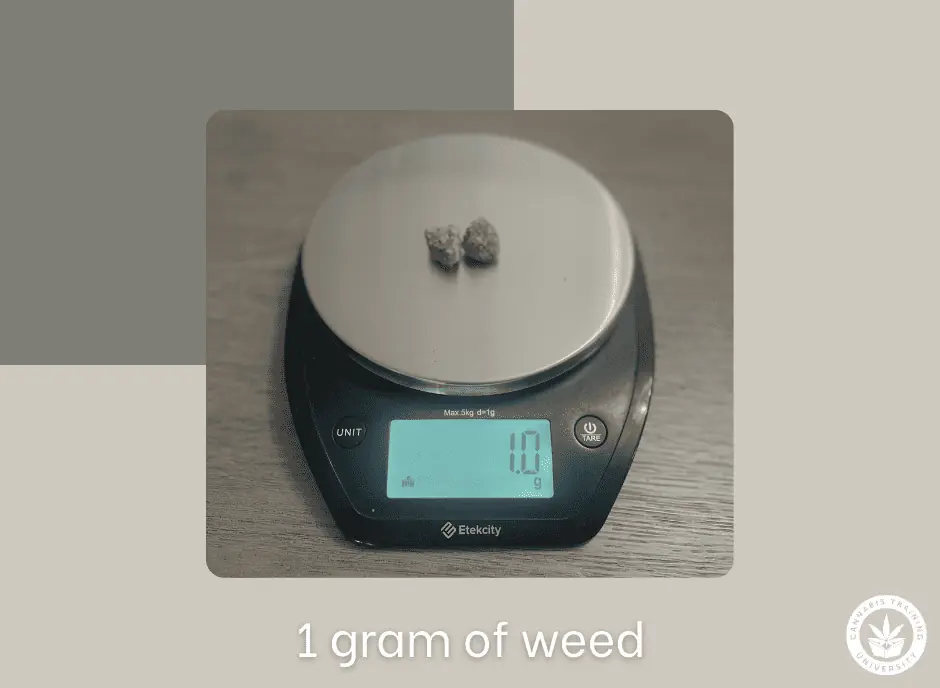
Eighth of Weed
An eighth refers to an eighth of an ounce of weed, or 3.5 grams. An eighth is the most popular cannabis quantity and one of the lowest amounts available at dispensaries.
For most users, an eighth is enough to last them for a good while (at least a week) before they have to stock up again.
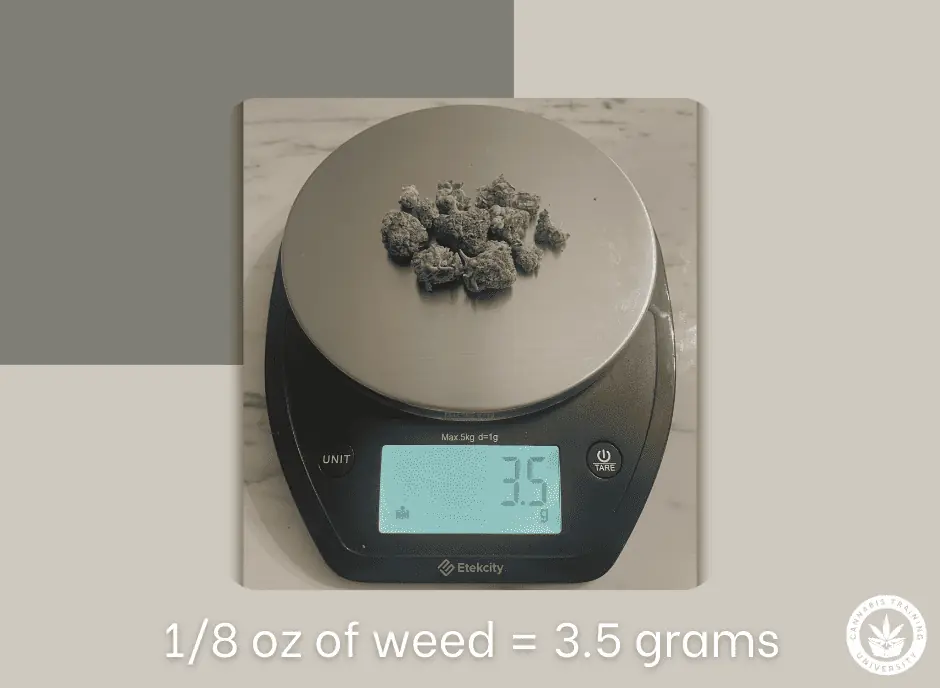
Quarter of Weed
If someone talks about a quarter of weed, they are referring to a quarter of an ounce, also known as a quad or quarter, weighing about 7 grams.
A quarter is equal to two eighths of weed. A quarter ounce is a perfect amount for a large gathering with friends.
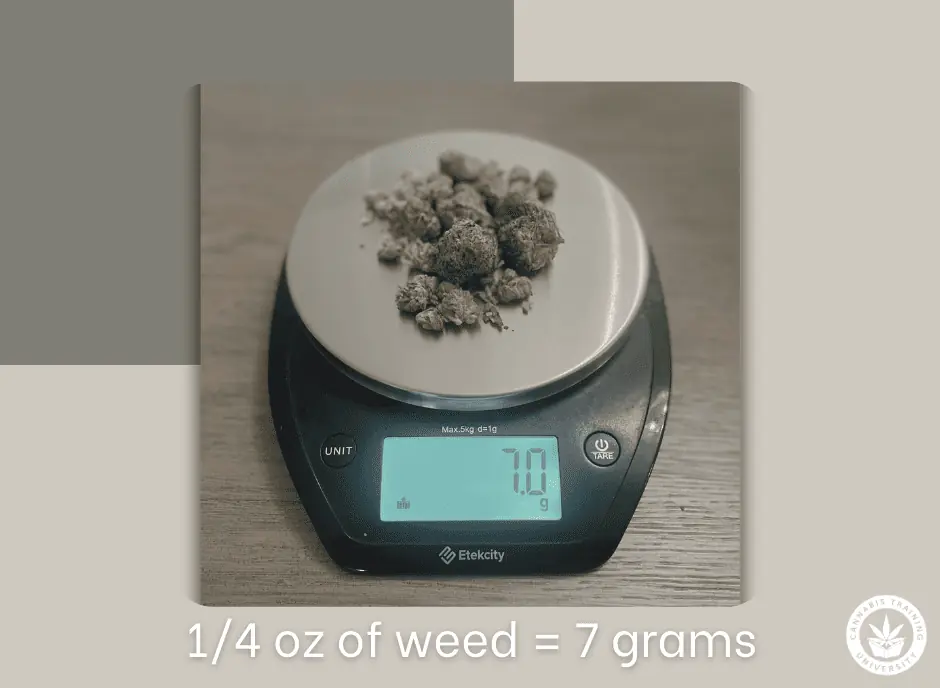
Half Ounce of Weed
A half is short for a half-ounce of cannabis, or 14 grams. A half-ounce, also called half a zip, is equal to two quarters or four eighths. Half ounces and higher weed amounts usually are a better deal than smaller amounts.
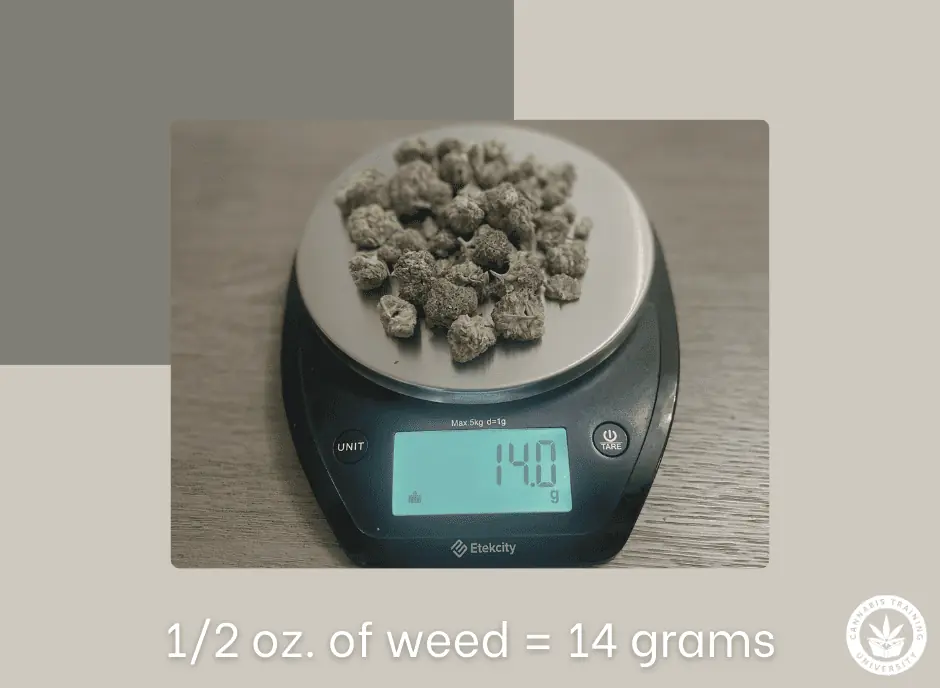
Ounce of Weed
An ounce, also called a zip, refers to 28 grams of cannabis. In most legal states, an ounce is the most you can buy at one time.
Buying an ounce of cannabis at a time, can get users the best bang for their buck compared to buying smaller amounts.
Quarter Pound of Weed
A quarter-pound, also known as a QP, is not commonly available for cannabis users, only for licensed operators (retailers, processors, etc.).
A quarter-pound is equal to four ounces or 112 grams of cannabis. In most states, possession of a quarter pound of cannabis is prohibited.
Pound of Weed
A pound of weed contains 16 ounces of cannabis or 448 grams.
Most Common Weed Measurements Overview
- Gram (g): The smallest unit of measurement, often used for small quantities of cannabis. One gram is approximately enough to roll one joint or fill one bowl in a pipe or bong.
- Eighth (1/8 ounce): Also known as an “eighth,” this is equal to 3.5 grams of cannabis. It’s a common quantity for personal use and typically enough for a few joints or several bowls.
- Quarter (1/4 ounce): Equal to 7 grams of cannabis, a quarter is double the size of an eighth. It’s a popular choice for moderate consumers or those looking to stock up for personal use.
- Half Ounce (1/2 ounce): Equal to 14 grams of cannabis, a half ounce is a larger quantity typically purchased by more frequent consumers or shared among friends for social gatherings.
- Ounce (oz): Equal to 28 grams of cannabis, an ounce is a substantial amount often purchased by heavy consumers or for longer-term personal use. It’s also commonly used by dispensaries for bulk sales.
- Pound (lb): Equal to 16 ounces or 448 grams of cannabis, a pound is a large quantity typically purchased by commercial growers or distributors. It’s not commonly used for personal consumption but rather for wholesale transactions.

Fred Hernandez
Fred Hernandez is a highly accomplished and versatile writer, boasting an extensive background in the cannabis industry. With an in-depth understanding of various sectors including cultivators, processors, retailers, and brands, Fred’s expertise spans across the entire cannabis landscape. As a prominent contributor to CTU, he consistently delivers insightful articles exploring the latest developments, news, and regulations shaping the cannabis industry. Whether it’s delving into the intricacies of cannabis products, cannabis strain reviews, or providing comprehensive analyses of cannabis laws, or sharing expert insights on cannabis cultivation techniques, Fred’s wealth of knowledge positions him as an invaluable writer and educator for all cannabis-related subjects.

Cannabis Consumers Are Being Hit By The Tariffs

The Best Tips To Update Your Wardrobe

Former New York Knick Iman Shumpert debuts ‘TSA Approved’ legal cannabis brand

How New York pot pioneers made it to legal dispensary shelves

Scientists Now Think That One Compound in the Cannabis Plant Can Replace All Opiates

Vladimir Bautista is leading Happy Munkey’s legacy-to-legal takeover

Cannabis Can Help A Sore Throat

Cannabis and the Authoritarian State

As cannabis consumer tastes evolve, industry must look beyond potency

Article: Early 2025 Empire State Psychedelic Policy Roundup

Distressed Cannabis Business Takeaways – Canna Law Blog™

United States: Alex Malyshev And Melinda Fellner Discuss The Intersection Of Tax And Cannabis In New Video Series – Part VI: Licensing (Video)

What you Need to Know

Drug Testing for Marijuana – The Joint Blog

NCIA Write About Their Equity Scholarship Program

It has been a wild news week – here’s how CBD and weed can help you relax

Cannabis, alcohol firm SNDL loses CA$372.4 million in 2022

A new April 20 cannabis contest includes a $40,000 purse

Your Go-To Source for Cannabis Logos and Designs

UArizona launches online cannabis compliance online course
Trending
-

 Cannabis News2 years ago
Cannabis News2 years agoDistressed Cannabis Business Takeaways – Canna Law Blog™
-

 One-Hit Wonders2 years ago
One-Hit Wonders2 years agoUnited States: Alex Malyshev And Melinda Fellner Discuss The Intersection Of Tax And Cannabis In New Video Series – Part VI: Licensing (Video)
-

 Cannabis 1012 years ago
Cannabis 1012 years agoWhat you Need to Know
-

 drug testing1 year ago
drug testing1 year agoDrug Testing for Marijuana – The Joint Blog
-

 Education2 years ago
Education2 years agoNCIA Write About Their Equity Scholarship Program
-

 Cannabis2 years ago
Cannabis2 years agoIt has been a wild news week – here’s how CBD and weed can help you relax
-

 Marijuana Business Daily2 years ago
Marijuana Business Daily2 years agoCannabis, alcohol firm SNDL loses CA$372.4 million in 2022
-

 California2 years ago
California2 years agoA new April 20 cannabis contest includes a $40,000 purse



